When traveling to Indonesia, it's important to understand the local currency, the Rupiah (IDR), to ensure smooth transactions.
Whether wandering through Bali’s rice terraces or exploring Jakarta’s bustling markets, understanding the currency will help manage your expenses and enhance your trip.
This guide introduces you to Indonesian coins and banknotes, explores the history of the Rupiah, and offers practical tips for handling money while traveling in Indonesia.
To ensure that communication and money management are as seamless as possible, opt for an iRoamly Indonesia travel eSIM instead. You’ll get high data speeds to check rates and send money.
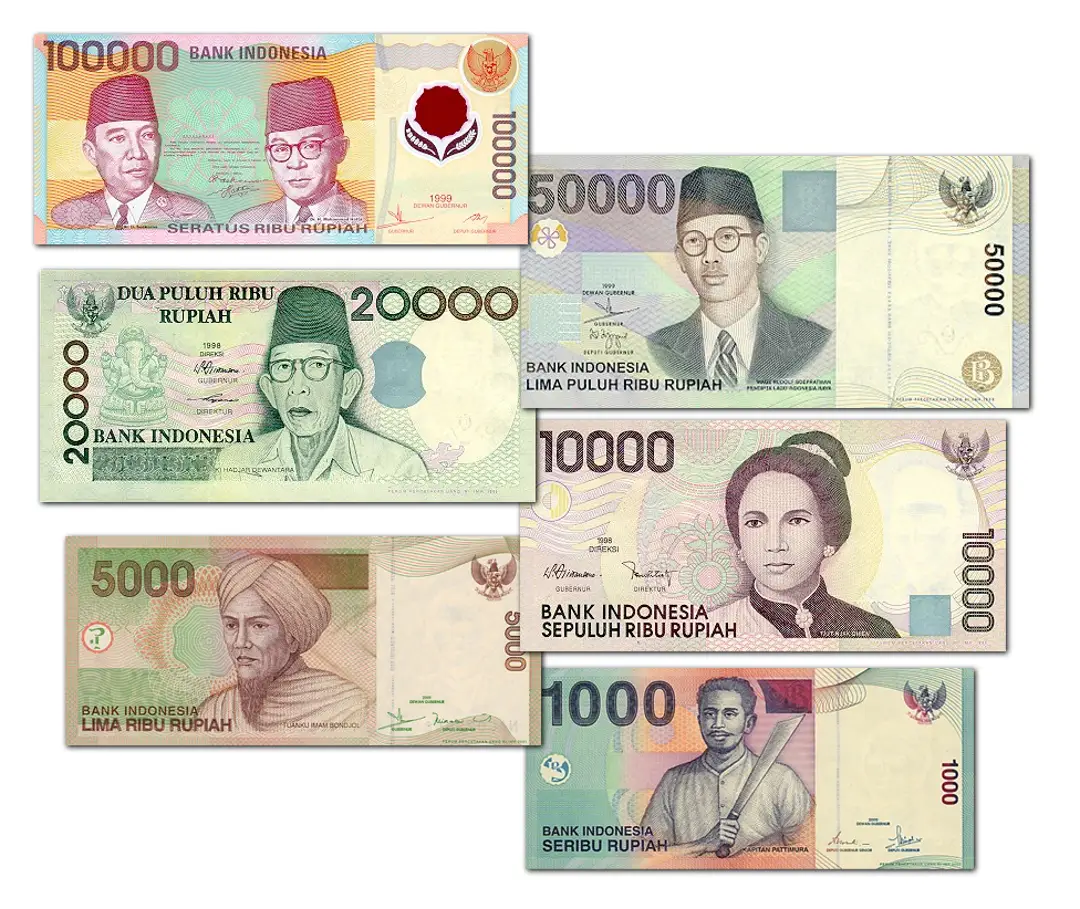
Overview of Indonesian Currency (Rupiah)
Indonesia’s official currency is the Indonesian Rupiah (IDR), issued and regulated by Bank Indonesia. The symbol for the Rupiah is “Rp,” and it is used widely throughout the country.
Currency is available in coins and banknotes, and although credit cards are becoming more common in larger cities, cash remains the primary mode of payment.
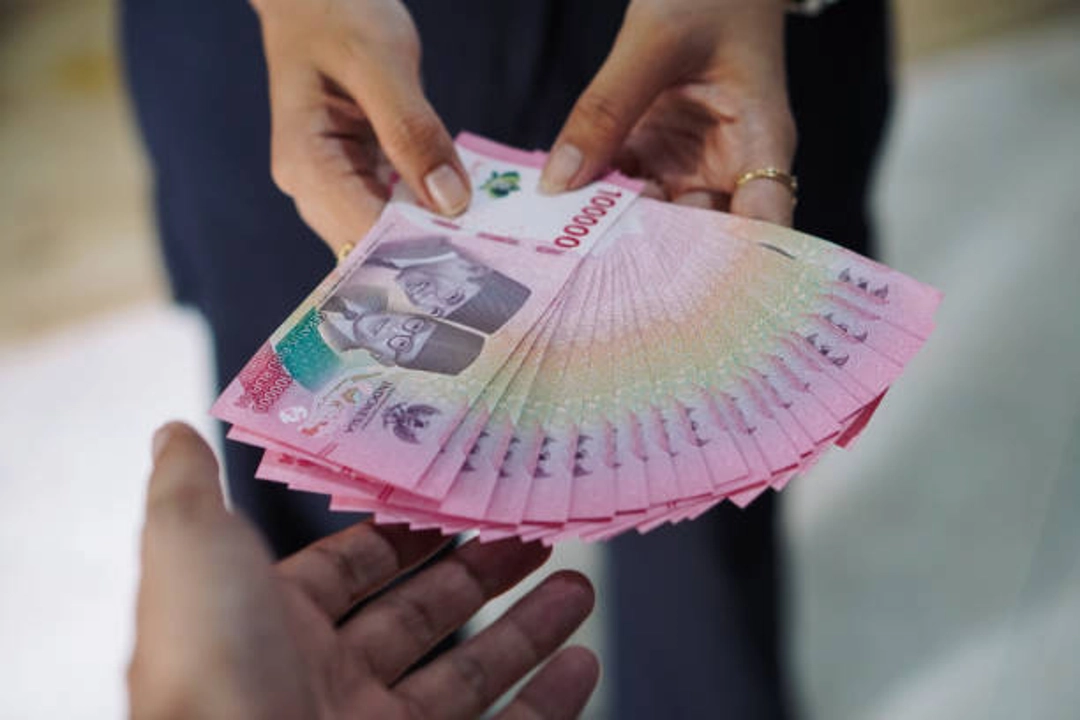
As the Rupiah’s exchange rate fluctuates, it’s advisable to check current rates before you travel to get the most value for your money.
Currency can be exchanged at airports, exchange offices, or banks, and ATMs are widely accessible across Indonesia.
However, be ready to carry cash, especially when visiting smaller towns or local markets where electronic payments might not be accepted.
Design and Features of Indonesian Currency
Design and Features of Indonesian Coins
Indonesian coins are available in various denominations, including 50 IDR, 100 IDR, 200 IDR, 500 IDR, and 1,000 IDR. These coins are crafted from different metals like copper, nickel, and steel, with variations in size and weight based on the denomination.
50 IDR and 100 IDR coins are smaller and lighter, typically constructed from copper-plated steel.
200 IDR and 500 IDR coins are larger and are made from nickel-plated steel, providing a more robust feel.
1,000 IDR coins are the largest, consisting of brass or bronze.
Each coin boasts distinctive designs that embody Indonesia’s cultural and historical essence. The most recognizable symbol is the Garuda, Indonesia’s national emblem, found on higher denomination coins.
The reverse sides frequently display additional national symbols or landmarks, contributing to their role as a significant element of the culture of Indonesia.
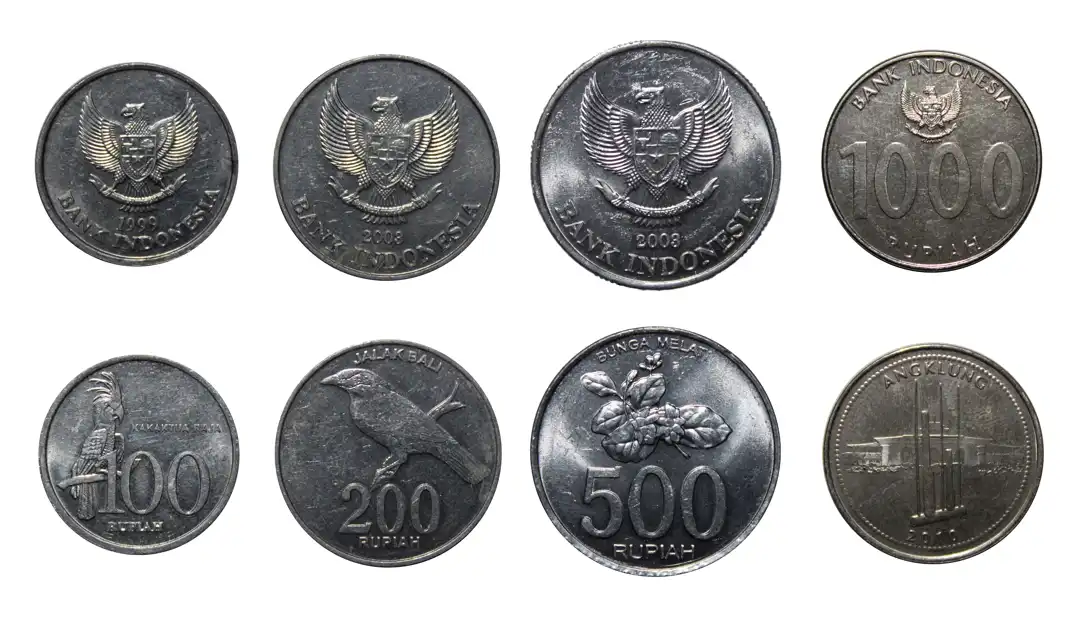
Design and Features of Indonesian Banknotes
Indonesian banknotes come in denominations of 1,000 IDR, 5,000 IDR, 10,000 IDR, 20,000 IDR, 50,000 IDR, and 100,000 IDR. They showcase intricate designs with vivid colors and images highlighting Indonesia’s rich cultural and historical significance.
The 1,000 IDR notes are blue, and the 5,000 IDR notes are green.
10,000 IDR notes are purple, 20,000 IDR notes are orange, and 50,000 IDR notes are blue.
The 100,000 IDR note, the highest denomination, is in pink and purple, featuring prominent figures from Indonesia’s history.
Each note highlights prominent leaders like Sukarno, Indonesia’s first president, along with images of significant landmarks, flora, and fauna.
For instance, the 100,000 IDR note features Sukarno’s portrait on the front and displays Indonesia’s rich cultural diversity, including traditional art, on the reverse.
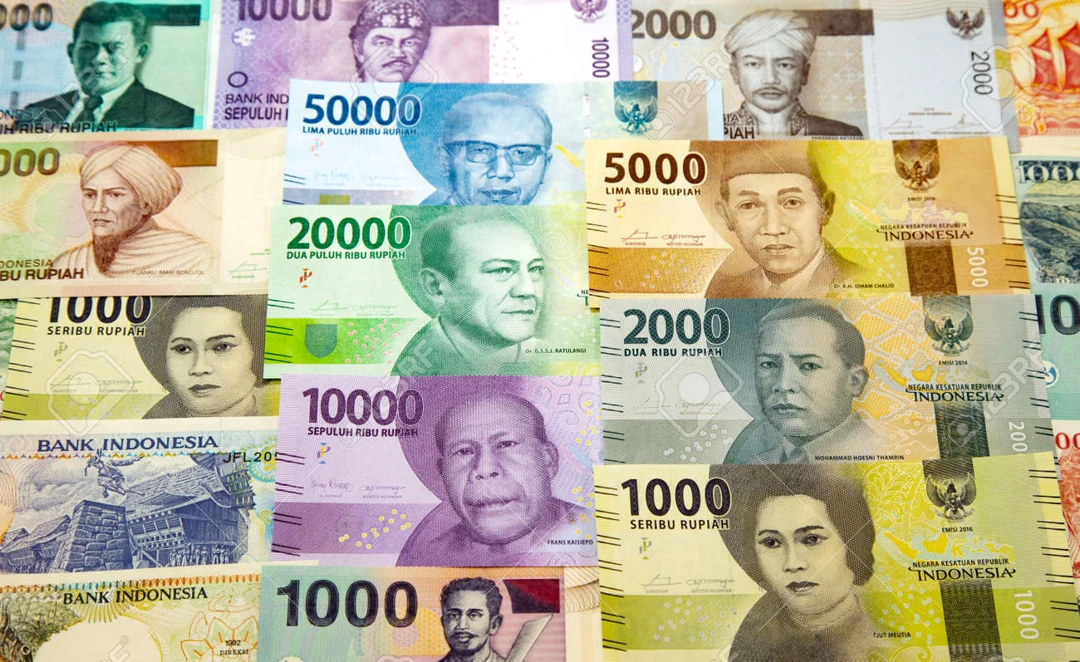
Moreover, modern security features are integrated into the banknotes to prevent counterfeiting. These features include watermarks, security threads, and holographic elements that make the notes difficult to replicate.
How to Manage Money in Indonesia
Managing your money in Indonesia is relatively simple with these tips.
For exchanging your currency, while you should change a small amount at the airport for your most immediate needs, you can usually get better rates downtown or at an ATM.
Just never use any exchange that looks shady to avoid scams!
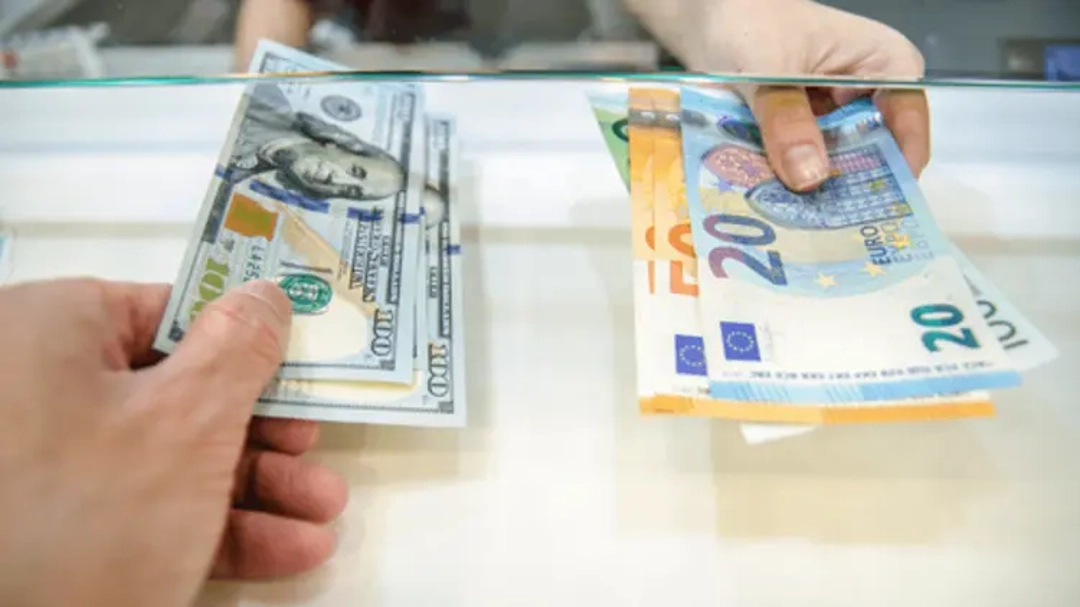
While credit card usage is growing in prominence at large hotels, restaurants, and malls, cash remains the most accepted payment form in many places.
In rural regions, street markets, or small retailers, cash payments are often necessary, so it's practical to have smaller denominations readily available.
Budgeting is important — especially in a foreign country. Calculate your daily budget and don’t forget to also factor in some extra cash fore those inevitable souvenirs. Happy travels. Indonesia is waiting for you!
Practical Tips for Tourists in Indonesia
Carry small bills and coins: In most areas, you will need to carry small bills and coins to enjoy Indonesian culinary delights, take a taxi, or shop at markets. Having a mix of different denominations makes transactions easier and avoids confusion.
Tipping in Indonesia: Although tipping isn't mandatory, it's typical to leave a small tip (about 5-10% of the bill) for good service in restaurants and for taxi drivers. You can use small coins or banknotes for this.
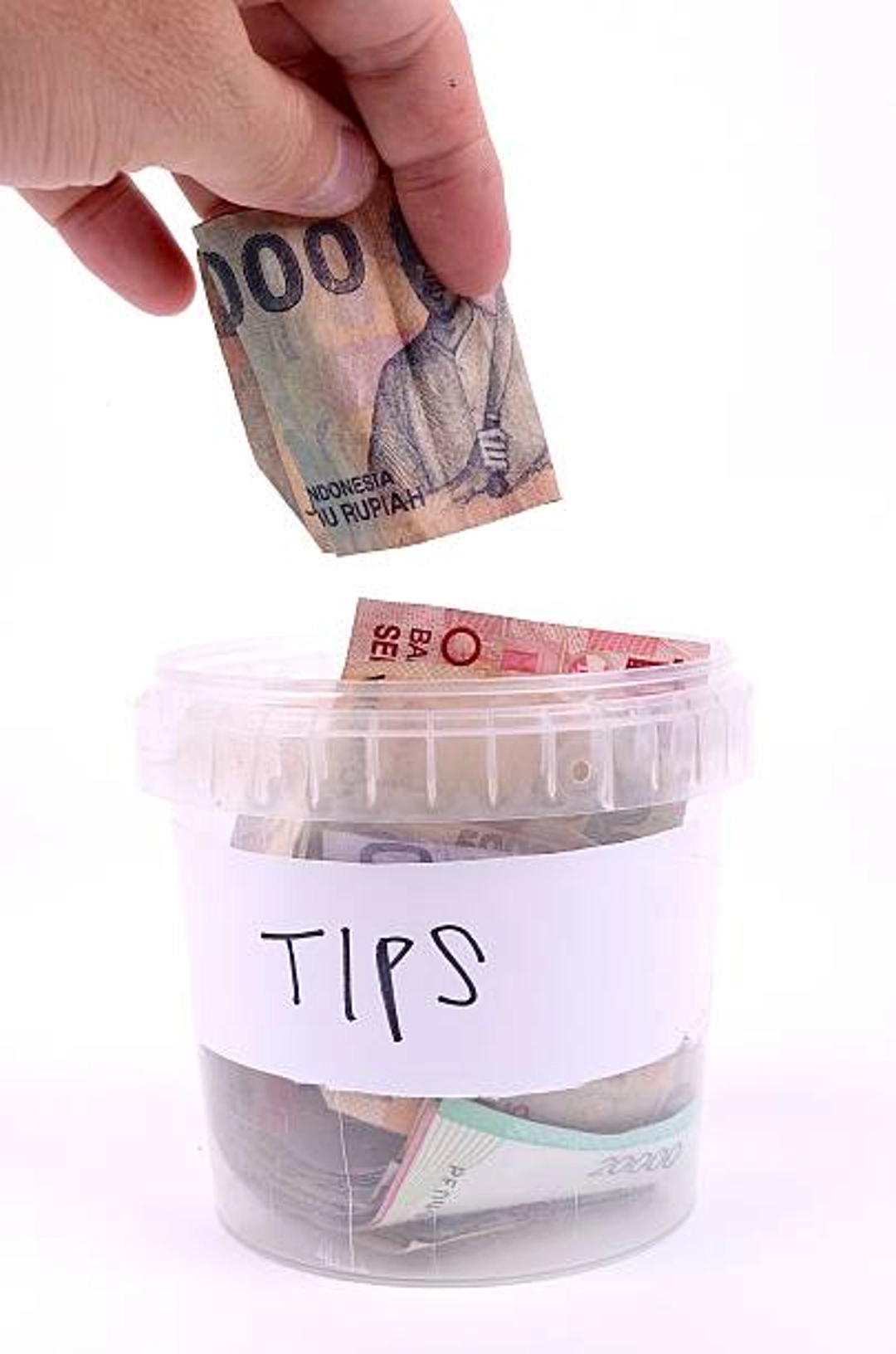
Use the local currency: Even in tourist spots where US dollars are accepted, it's generally better to pay in Indonesian Rupiah to get the best exchange rates. It's advisable to convert your currency to Rupiah for most purchases.
Be careful with large cash withdrawals: While ATMs are common, withdrawing a lot of money at once could draw unwanted attention. Always withdraw cash in well-lit, secure places.
FAQ
1. Are credit cards widely accepted in Indonesia?
Credit cards are accepted in major cities, hotels, and larger businesses. However, smaller shops, rural areas, and street vendors generally prefer cash.
2. Can I use US dollars or other foreign currencies in Indonesia?
While US dollars are accepted in some tourist areas, it’s best to use Indonesian Rupiah for most transactions. Always carry local currency for convenience.
3. What should I do if I receive counterfeit money?
If you suspect you’ve received counterfeit money, report it immediately to local authorities. Avoid accepting torn or damaged bills, as they may not be accepted by others.
Conclusion
Understanding the Indonesian Rupiah (IDR) will help increase your confidence and preparedness as you travel throughout Indonesia.
From coins to banknotes, the currency mirrors the country's rich history and culture, serving as both a practical tool and a reminder of Indonesia's heritage.
Whether shopping at local markets or exploring remote areas, effective money management will enhance your travel experience and allow you to fully enjoy everything Indonesia has to offer.
